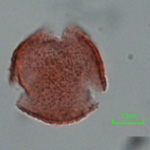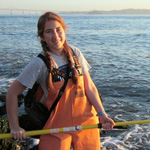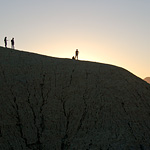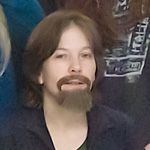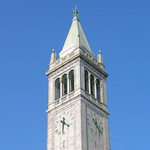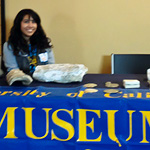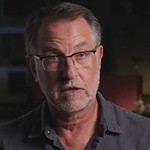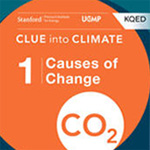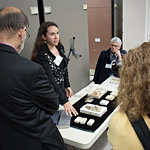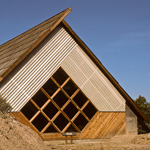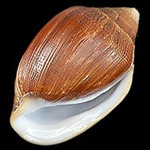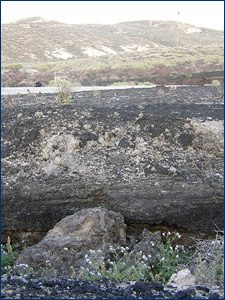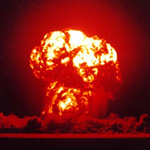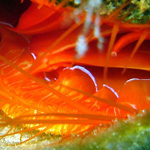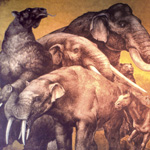California has more than 26 oak (Quercus) species, many of which have widespread distributions and different habitats. For example, the California black oaks (Q. kelloggii) are distributed in foothills and low mountains (altitude ~4750 feet), while the Coast live oak (Q. agrifolia; altitude ~830 feet) lives near the coast. Palynologists study the distribution of plant pollen and spores in space and time, and changes in their assemblages reflect changes in regional and local vegetation. In the … [Read more...] about A morphological study of living and fossil Quercus (oak) pollen from California using scanning electron microscopy
Latest News
Building a forest: The adventures continue in the Jose Creek Member
It's April 18, 2015, and I am sitting in a room at the Charles Motel in Truth or Consequences, New Mexico, the same apartment-style room that I have stayed in during the past four years of field work. Time sure has passed by quickly; from my first paleontological dig as an undergraduate at Texas State University-San Marcos under Dr. Gary Upchurch, to my ambitious inaugural self-guided field trip as a first-year graduate student at Berkeley, to last year's even longer field excursion, and finally … [Read more...] about Building a forest: The adventures continue in the Jose Creek Member
Do green tide algae reproduce all year?
Occurrences of green tides have been on the rise in recent years worldwide. The most impressive have been reported off the coast of China in the Yellow Sea. In August 2014, the Monterey Bay area experienced a green tide that resulted in the accumulation of the macroalgae, Ulva, on its beaches. Algal blooms often make the headlines in spring and summer yet they are not a new phenomenon. In fact, toxic algal blooms may have been responsible for bird, fish and marine mammal die-offs recorded in … [Read more...] about Do green tide algae reproduce all year?
Southern California Spring Break 2015 field trip
Annual field trips used to be something of a tradition at UCMP, but that tradition faded once the Department of Paleontology merged with other units to become the Department of Integrative Biology in 1989. In recent years, former UCMP Director Jere Lipps organized and led three field trips: Baja in 2001, southern California in 2008, and Oregon in 2009. And now two of UCMP’s newest curators, Assistant Professors Seth Finnegan and Cindy Looy, are trying to revive the annual field trip tradition. … [Read more...] about Southern California Spring Break 2015 field trip
The Bearded Lady Project comes to the UCMP
The Bearded Lady Project: Changing the Face of Science came to the UCMP in February, one of many stops in a photographic journey made by documentary film makers seeking to educate the public on gender inequities in geoscience fields, particularly in paleontology. Women of the UCMP sat for portraits that will become part of a photography series intended to celebrate adventurous women who are true pioneers in the fields. See if you can recognize some of your favorite women of the UCMP! … [Read more...] about The Bearded Lady Project comes to the UCMP
Fossils in the Campanile? It’s true!
If you have taken the elevator to the top of Sather Tower, aka the Campanile, perhaps you've heard that some of the floors of the tower are filled with fossils. This is not a campus myth, it's fact! The Campanile is celebrating its 100th anniversary this year and its very first occupants — moving in before the tower was even completed — were fossils. At that time, the museum and Department of Paleontology were in Bacon Hall, just east of the Campanile, so as a storage facility, the … [Read more...] about Fossils in the Campanile? It’s true!
UCMP participates in the Bay Area Science Festival for fourth straight year
On November 1, UCMP participated in Discovery Days at AT&T Park, the closing event of the annual Bay Area Science Festival. The museum has been a Science@Cal exhibitor at the Festival for four years running. This year, over 30,000 people enjoyed 200 free activities and exhibits at the Festival, a “science extravaganza.” The Festival is meant to entertain and inspire; it’s where visitors can unleash their inner scientist. … [Read more...] about UCMP participates in the Bay Area Science Festival for fourth straight year
UCMP curator and Integrative Biology professor keeps attention focused on climate change and mass extinction
On November 30, the Smithsonian Channel will air the film Mass Extinction: Life at the Brink featuring UC Berkeley researchers Walter and Luis Alvarez, as well as UCMP’s Tony Barnosky; and Stanford University’s Elizabeth Hadly and Jon Payne. The film describes what we know about the Cretaceous-Paleogene boundary, how we know it, and how the Cretaceous-Paleogene and end-Permian mass extinctions relate to our present extinction crisis. Learn more at smithsonianchannel.com and … [Read more...] about UCMP curator and Integrative Biology professor keeps attention focused on climate change and mass extinction
UCMP expertise tapped for new KQED e-book series on climate change
KQED partnered with UCMP and Stanford University’s Precourt Institute for Energy to produce a four-part e-book series entitled Clue into Climate. Lisa White, UCMP’s Assistant Director for Education and Public Programs, says “These new e-books bring climate research to life and create greater access to information about climate and global environmental change in an easy to understand package.” The e-books explore the topic through a blend of high-quality media, interactive graphics and … [Read more...] about UCMP expertise tapped for new KQED e-book series on climate change
UCMP expands its Homecoming Weekend program
In previous years, UCMP’s involvement with UC Berkeley’s Homecoming Weekend was limited to a single tour of the collections (normally closed to the public), but this year, the museum decided to expand on that and offer something a little different for its Friends and donors. On Friday, October 10, Assistant Director for Collections and Research Mark Goodwin started things off with his annual tour of the collections, but that was followed by an afternoon lecture by UCMP Curator and Integrative … [Read more...] about UCMP expands its Homecoming Weekend program
The 2015 UCMP Fossil Treasures Calendar now available
UCMP and the development of the ichthyosaur quarry at Berlin-Ichthyosaur State Park The focus for the 2015 calendar became Nevada’s Berlin-Ichthyosaur State Park when a trove of 35 mm slides and black & white prints chronicling the development of the ichthyosaur quarry was found in the museum archives. These images, from the Charles L. Camp Papers, dominate the calendar, however, there are also slides from the collections of Sam Welles and Joe Gregory, images from the Huff family archives, … [Read more...] about The 2015 UCMP Fossil Treasures Calendar now available
Air-breathing snails, old and new
The UC Museum of Paleontology (UCMP) is home to more than five million invertebrate fossil specimens, a majority of them being marine in origin. While rehousing the US Geological Survey’s Menlo Park collections, I came across specimens of Actinella, a genus of terrestrial gastropod. The earliest known air-breathing gastropods in the fossil record appeared during the Carboniferous Period, Carboniferous being a reference to the abundant coal deposits formed at this time, 359 to 299 million years … [Read more...] about Air-breathing snails, old and new
New UCMP grant to curate the Pleistocene-Holocene McKittrick tarpit fossil collection
UCMP is pleased to announce the award of a new $149,713 grant from the Institute of Museum and Library Services to curate, rehouse, and capture digital images of the important Pleistocene-Holocene McKittrick tarpit fossil collection from Kern County, California. The McKittrick tarpits were excavated by Cal scientists in the 1930s and yielded thousands of bones of extinct and extant mammals, birds, and reptiles. The area was eventually designated a California State Historical Landmark due to the … [Read more...] about New UCMP grant to curate the Pleistocene-Holocene McKittrick tarpit fossil collection
Paleontological field work and nuclear testing
In the mid to late 1950s, Charles L. Camp, Professor in the Department of Paleontology and former Director of UCMP (1930-1949), spent his summers working at what would later become Berlin-Ichthyosaur State Park, about 55 miles north of Tonopah, Nevada, and 150 miles northwest of Yucca Flat at the Nevada Test Site. Beginning in 1951 and ending in 1992, the United States did extensive nuclear testing at Yucca Flat. There were 739 tests conducted there, resulting in Yucca Flat being called “the … [Read more...] about Paleontological field work and nuclear testing
New fossil footprint exhibit debuts online
Visit the new UCMP/University of Colorado online exhibit on fossil tracks! It is fascinating to consider that fossil footprints and trackways offer direct physical evidence that ancient animals passed through an area long ago. However, these trace fossils also provide important clues that shed light on several aspects of paleobiology, such as anatomy, locomotion patterns, behavior, and footprint preservation. The website provides basic information about the preservation of fossil tracks, how … [Read more...] about New fossil footprint exhibit debuts online
Global change consensus statement having a global impact
Over a year ago in a May 30, 2013, blog post, we reported on Professor of Integrative Biology and UCMP curator Tony Barnosky’s presentation to Governor Jerry Brown of a statement about global environmental problems and what people must do to ensure the health of the planet. That statement was written at Brown’s request after the Governor had heard about a Nature paper that Barnosky had coauthored with his wife, Stanford professor of Biology and UCMP research associate Elizabeth Hadly, and … [Read more...] about Global change consensus statement having a global impact
Making the Earth sciences engaging and relevant for broader communities
Historically, paleontology has been a male-dominated field. Over the past few decades, more and more women have entered the field, but female African-American paleontologists remain a rarity. Lisa White, UCMP’s Assistant Director of Education and Public Programs, is one of these rare women. She spent 22 years as a faculty member at San Francisco State University and held the titles of Professor and Associate Dean when she came to Berkeley in 2012. White was profiled recently in California, UC … [Read more...] about Making the Earth sciences engaging and relevant for broader communities
Flash! Grad student discovers how Ctenoides ales, the “disco clam,” flashes
Back in 2010, while diving in Indonesia, Lindsey Dougherty first witnessed the flashing behavior of the so-called “electric clam” or “disco clam,” Ctenoides ales. She decided then and there that the focus of her Ph.D. would be the study of these fascinating bivalve mollusks. Now, four years later, Dougherty reports in the British Journal of the Royal Society Interface just how the flashing works. A nice description of the mechanism and a video showing the flashing behavior is provided in … [Read more...] about Flash! Grad student discovers how Ctenoides ales, the “disco clam,” flashes
75-year-old sculptures by William Gordon Huff relocated
For the past three years or so I have been researching the life of sculptor William Gordon Huff. Never heard of him? That’s not too surprising since he didn’t have gallery shows and, to my knowledge, no major museum has examples of his work. But, if you do any traveling in California, there’s a good chance that you’ve seen Huff’s work without even knowing it, because most of his sculpture was public art, primarily in the form of bronze bas reliefs for historical plaques. Huff’s plaques can be … [Read more...] about 75-year-old sculptures by William Gordon Huff relocated
Where have all the mammoths gone? And why do we care?
What’s the first thing that comes to mind when you think of Africa? Probably a lot of big animals, right? Elephants and lions, zebras and cheetahs, hippos and rhinos, giraffes, and enormous herds of wildebeest moving across the savannah. Well, what a lot of people don’t realize is that for most of the past 50 million years, most of the world looked a lot like Africa! Not that long ago, Europe, Asia, and North and South America all hosted relatives of elephants, zebras, and lions inhabiting … [Read more...] about Where have all the mammoths gone? And why do we care?
